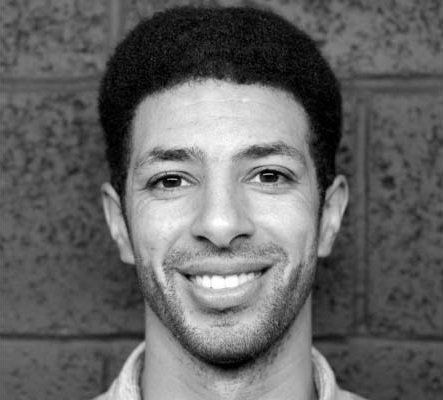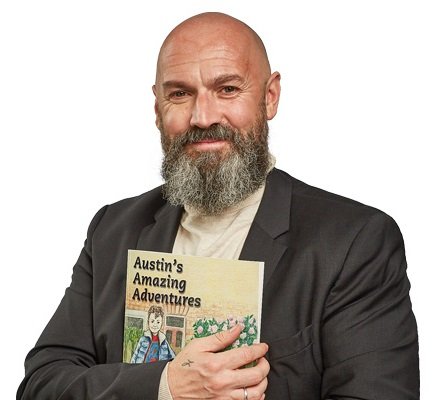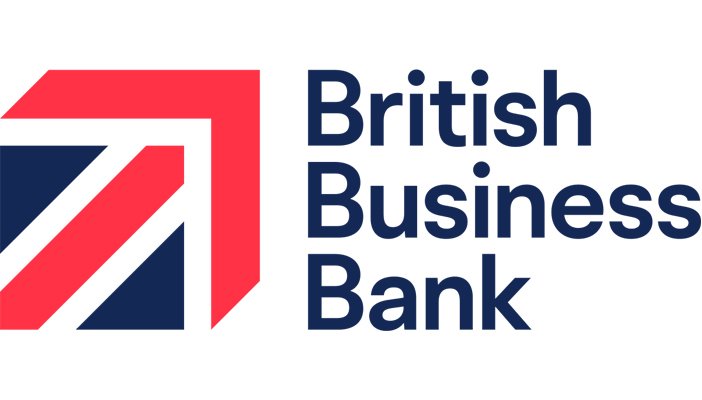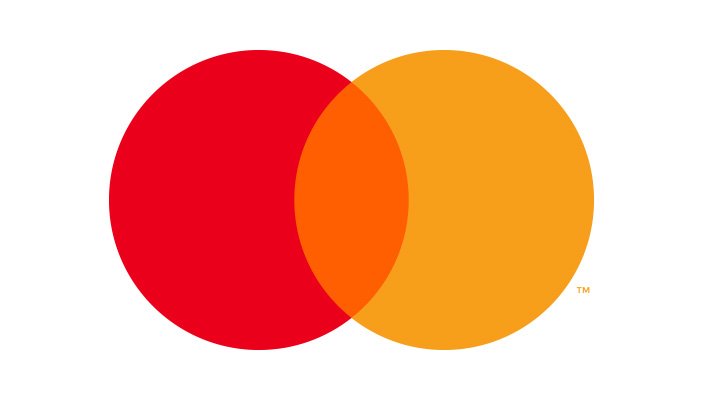Meet the See Differently Awards Finalists 2022
Congratulations to all our finalists!
This year we received many inspiring stories from individuals and organisations across the UK. Three finalists were chosen for each category and you can read about them below.
The winners for each category were announced at a glittering awards ceremony in central London on 29 March 2022. Find out who left with a trophy here.
Campaigner of the Year sponsored by Mastercard
Sekha Hall
Sekha Hall began campaigning for better rail safety after his partner of 20 years, Cleveland, fell from a train platform without tactile paving. For the past two years, he has campaigned tirelessly to improve train station safety.
"I didn’t want Cleveland to be a statistic. He was a normal person, I wanted to raise awareness of the situation at stations. They are dangerous places for blind and partially sighted people. Something needed to be done."
Sekha promoted RNIB’s Rail Safe petition and presented it to Network Rail and the Department for Transport in July 2021. He has since met with the then Rail Minister and rail operators to demand tactile paving is installed on all train platforms much sooner than Network Rail's self-imposed deadline of 2029. As a result of the meeting, train stations across the UK will use audio announcements to warn blind and partially sighted people of the lack of tactile paving until this vital safety feature is installed.

Image: A photograph of Sekha Hall
Sarah Leadbetter
During the Covid-19 pandemic, Sarah Leadbetter was shocked when the UK government sent her health information that couldn't be read by someone with sight loss.
"I just want to be independent, and I will continue to campaign until all government and NHS communications are sent out by email as well as post."
Sarah, who is registered blind, has been campaigning on behalf of blind and partially sighted people for many years. She argues that this inaccessibility contravenes the 2010 Equalities Act and is in breach of her human rights.
Sarah challenged the UK government by way of judicial review and secured fundamental promises of change. The government is now considering how it can ensure all health information is sent in a person’s preferred format, and whether this can be extended to other government health-related communications.
Sarah's not done yet. She plans to continue campaigning until all government and NHS communications are sent out by email as well as post.

Image: Sarah Leadbetter and her guide dog.
Dr Mhairi Thurston
Dr Mhairi Thurston describes herself as an academic activist. She specialises in research into counselling for blind and partially sighted people and uses her findings to campaign for better access to mental health support.
"Mhairi is strongly committed to making a difference to policy and practice in the field of counselling and vision impairment." - Matt Broom, Mhairi's nominator
After losing her own sight at the age of 39, Mhairi retrained as a counsellor. She particularly wanted to find ways to support others with the emotional impact of sight loss, and what she describes as the "universal trauma" caused by a sight loss diagnosis.
Mhairi helped develop RNIB’s accreditation programme which trains counsellors to work specifically with people with sight loss. Her research into the stages someone goes through on a sight loss journey is used to teach counsellors how to tailor their approach.
She also works with policy makers to improve access to services and regularly speaks at events.

Image: Dr Mhairi Thurston smiling at the camera.
Community Contributor of the Year sponsored by Santen
Colin Johnson
As a runner for 30 years, Colin Johnson is well aware of the difference running can make to someone's mental well-being. So when he guided a runner with sight loss during his first marathon, Colin came up with the idea of setting up the VI Runners Bristol Facebook group to match blind and partially sighted runners with guides.
"Colin's work has developed a community of blind and partially sighted people to connect through not only running but through social engagement both physically and virtually through social media platforms." - Alex Pitts, British Blind Sport
The group now has over 450 members, with around 15 blind or partially sighted people taking part each week.
Colin also trains running guides and played a key role in starting the Visually Impaired (VI) Runners 10K Challenge, which was held in September 2021. Before then, none of the big races in the UK had a category for runners with sight loss.
Colin is now encouraging the Great Run Company to add a category for blind and partially sighted runners into their other races, including the Great North Run.

Image: Colin Johnson smiling at the camera.
Sarah Huddart
Despite having no previous experience of working with children with a vision impairment, Sarah Huddart embraced the opportunity to support five-year-old Rebecca when she joined the class where Sarah works as a Learning Support Assistant.
"By raising awareness of sight loss, Sarah has surrounded our daughter with a warm, caring, understanding and open-minded community." - Ann, Rebecca's Mum
Sarah advocates for Rebecca's needs, raising awareness and fighting for the resources she needs.
She has helped Rebecca learn how to communicate with her peers at the mainstream school, and taught the other children about braille, using a cane and how they can be friends with Rebecca. They've learnt to gently squeeze her hand to let her know they're there. Rebecca has formed meaningful relationships with her peers thanks to Sarah's patient and intuitive approach.
Sarah is even learning braille with Rebecca and she's found creative ways to teach the rest of the class how to write their own names in braille.

Image: Sarah Huddart smiling at the camera.
Nathan Geering
Nathan Geering strives to make the arts accessible to blind and partially sighted people. He worked with the playwright Kaite O'Reilly to find out why blind and partially sighted people don’t go to the theatre as much as their sighted counterparts. The answer was clear, audio descriptions just didn't make the experience engaging.
"I worked with blind and partially sighted people to physicalise sounds, which means assigning a beatbox sound to a particular dance move."
Working with the sight loss community, Nathan developed the "Rationale Method of Audio Description", which assigns beatbox sounds to specific dance moves. He works with a poet to add emotion to audio descriptions.
Following the method's success, he now partners with arts organisations and film production companies to improve their audio description and make their output more accessible.
Nathan’s Injury Prevention Programme uses breakdancing to help blind and partially sighted people develop their spatial awareness and prevent injuries.
He works to make social activism available to everyone and has teamed up with the University of York to research the effect of watching dance for people with sight loss.

Image: Nathan Geering smiling for the camera.
Best Social Media Impact of the Year sponsored by Pantene
Dave Steele
When Dave Steele performed Ben E. King’s Stand by Me at a Retinitis Pigmentosa (RP) support group, the emotional response he received from the audience gave him an idea. He began to call himself the Blind Poet and to use poetry to normalise the thoughts and feelings people with sight loss often have.
"It was like flicking on a switch and I just couldn’t stop. I wanted to give people the support I didn’t get."
Dave speaks openly and honestly about his struggles and invites other blind and partially sighted people to share their own thoughts and feelings.
To date, he has written and posted over 800 poems online and his Blind Poet Facebook group is one of the largest support groups in the world for people with RP.
Dave has published three hugely successful collections of his poetry for adults and recently wrote a children’s book, Austin’s Amazing Adventures, which features a young boy with vision impairment.

Image: Dave Steele holding his book, titled "Austin's Amazing Adventures".
Claire Sisk
Claire Sisk uses social media to challenge misconceptions about sight loss and to share tips for navigating life as a blind or partially sighted person. She uses humour to educate and to break down barriers.
"Claire works hard to break down the myths surrounding sight loss and visual impairment." - Natasha Mendum, one of Claire's nominators
Claire started posting on social media when an incident in a supermarket made her realise how badly awareness needs to be raised about what sight loss really means.
She shares fun and entertaining videos on TikTok, Facebook and Instagram, often using humour to educate. She asks her followers to contact her if they need support and holds one-to-one video calls with people who need her help.
Claire now has over 148,000 followers on TikTok and has taken part in Channel 4’s Altogether Different campaign. Snapchat has even created a micro-documentary about her.

Image: Claire Sisk smiling at the camera.
Hannah Burgess
When Hannah Burgess posted about Nystagmus on Instagram, she had no idea that it would lead to a child being diagnosed far earlier than she would have been otherwise. Hannah's friend saw the post and remembered it when she had concerns about her child's sight.
"I want to target parents of children with visual impairment. I feel like they get told loads of scary things about what their child’s future holds. But I want parents to know it can be positive, it isn’t all negative."
Realising she could use social media to help other parents, Hannah started posting regularly about Albinism and Nystagmus, conditions that she was born with.
As a mum herself, Hannah shares her own experiences on Facebook, Instagram and TikTok with the aim of helping the parents of children with vision impairment feel positive about the future. She also speaks at schools and has written a children’s book about a little girl with Nystagmus.

Image: Hannah Burgess with her guide dog.
Team of the Year
VocalEyes
The charity VocalEyes is led by the belief that blind and partially sighted people should have the best possible opportunities to experience and enjoy art and heritage.
"The whole team rose to the challenge of Covid, to open up new worlds of digital work and platforms to blind audiences, providing hope, solace and opportunity in difficult and restrictive times." - Joanna Wood, VocalEyes' nominator
The team provides audio descriptions and training for theatres, museums, galleries and heritage sites, including audio-described performances and tours. They research how to improve access to the arts for people with sight loss and translate this into training on how best to support blind and partially sighted visitors.
Through their newsletter, surveys and telephone calls, VocalEyes gave blind and partially sighted people access to the arts throughout the pandemic.

Image: The VocalEyes team in a virtual online meeting.
Keep Edinburgh Eye Pavilion (KEEP)
When plans were announced to move the Princess Alexandra Eye Pavilion in Edinburgh, its users decided to make their concerns known through a letter-writing campaign. Keep Edinburgh Eye Pavilion (KEEP) was born.
"The group collected 179 signatures from people who access the services when they wrote to the Scottish government asking for the replacement hospital to be funded." - Sylvia Paton, chair of KEEP
Chaired by Sylvia Paton, the group is made up of eight members who all have sight loss. They choose to campaign through letter writing as they feel the group is too small for physical activism. Regardless, their efforts have led to the Scottish government and NHS Lothian agreeing to a new eye hospital in Edinburgh, which should open within five years.

image: Members of the Keep Edinburgh Eye Pavilion group, holding a KEEP poster.
Cardiff VI Rugby Team
Before the Cardiff VI Rugby Team was launched in 2019, there was no rugby team for people with sight loss anywhere in Wales.
"It’s quite a lonely place living with sight loss and so to be able to become part of a team and play rugby is a huge thing, a real boost to our lives – both on and off the pitch." - Gareth Davis, member of the Cardiff VI Rugby Team
Its founders worked with Sight Life Wales, previously known as the Cardiff Institute for the Blind, to make the team a reality. They've found that playing rugby has had a huge positive impact, not just on their physical health but it's also boosted their mental health and helped curb social isolation. It also challenges public perceptions of what blind and partially sighted people are capable of, which the team hopes will be seen in other areas of society such as employment.
Last year, the team hosted its first Inclusion Festival. Teams from across Wales came together to play touch rugby, many taking part in a competition for the first time.

Image: The Cardiff VI Rugby Team
Employer of the Year sponsored by Thomas Pocklington Trust
Nuneaton Signs
Nuneaton Signs was established in 1982 to provide meaningful training and employment to people with disabilities. Today, 70% of its workforce has a disability including three members of staff with sight loss.
"Nuneaton Signs firmly believes in supporting you in what you can do rather than what you cannot, and that your working life should not be defined by your disability." -
Michelle York, Commercial Director, Nuneaton Signs
By making sure everyone in the company has the equipment and working environment they need to do their job, the company helps promote independence. This includes providing funding for transport to get to and from work, and providing software options and gadgets. The views of its blind and partially sighted staff members are sought out whenever a potential change is discussed.

Image: The team at Nuneaton Signs stood outside
British Business Bank
British Business Bank first started to think about accessibility when considering its website. This led to wider conversations about the challenges faced by people with disabilities, and the bank was one of the first businesses to achieve part one of RNIB’s Visibly Better Employer standard.
"We took an accessibility-first approach. We wanted to give everyone a fair and equal chance to navigate the pages, access information and make an application." - Amanda Madigan, Director of Digital and Direct Marketing, British Business Bank
The bank has taken every opportunity to become more accessible, both to external customers and to internal employees. The team has taken steps such as rebuilding its online recruitment pages, using language in job adverts that isn't off-putting to people with sight loss and working with its third party suppliers to ask them to follow its lead.

Image: British Business Bank logo
Veolia UK
When John Riddock went on a business trip with his manager, Kenny Orr, Kenny realised the extent of the challenges he faces as an employee with sight loss.
"I’m not very good at asking for help, but Kenny is able to recognise when I need support and always asks 'what can I do to help?'" - John Riddock, Costs Engineer, Veolia UK
Kenny realised that improvements needed to be made and he went to RNIB and Guide Dogs for advice on how to support someone with sight loss.
As Kenny's advocate, he's made sure John has everything he needs to do his job properly. This includes giving John an office with enough space for his guide dog, buying new software and equipment, and providing him with a dedicated drop-off point for when he arrives at work.
John has run workshops to help his colleagues better understand what life is like with sight loss.

Image: The team at Veolia UK stood outside
Volunteer of the Year sponsored by Bayer
Nina Chesworth
Nina Chesworth describes raising awareness of Charles Bonnet Syndrome (CBS) as her "life's mission". She not only hosts a monthly support group, but she also works with other Esme's Umbrella group leaders to encourage everyone to share ideas on how best to support people affected by CBS.
"If it wasn’t for this amazing woman I would be completely lost in the crazy world in my eyes. Nina helped me more than she will ever know." - Regular attendee at Nina's monthly support group
Nina offers her expertise to eye health professionals, including social workers and Eye Clinic Liaison Coordinators, to help them offer the best possible care to people experiencing CBS. She's developed training materials for the Sight Loss Council and visits schools to give talks about the syndrome. Nina has even been sought out by Coronation Street to help with a CBS storyline!
Last year, Nina raised over £3,800 for CBS research by walking 100 miles in just 10 days.

Image: Nina Chesworth smiling at the camera.
Suzie Simons
Suzie Simons is a big believer in the power of peer support. When she started volunteering as a facilitator at RNIB's Living Well with Sight Loss courses, she quickly realised this service was needed in more hospitals.
"I felt very strongly that the Living Well with Sight Loss course should be at all four of the Royal Free hospitals. I also felt there was a real need for a support group connected to it."
At the same time as she brought Living Well with Sight Loss courses to Edgeware Hospital, Suzie launched her Eye Matter support groups for blind and partially sighted people. The monthly sessions provide advice and information but crucially are an opportunity for people to socialise and support each other.
When the pandemic hit, Suzie didn't let it stop her. There are now seven online Eye Matter group sessions each week, hosted by Suzie and her team of 12 volunteers. On average the groups reach 90 people each week.

Image: Suzie Simons outside smiling at the camera.
Terry James
In 2017, membership and engagement with the Merton Sports and Social Club (MSSC) for Visually Impaired People was low. That changed when Terry joined the club's committee and grew membership figures from 13 to over 100 members, many of whom she introduced to the joy of tandem cycling.
"It’s all about coming together, and having a sense of belonging. Who wouldn’t want to be part of that?"
During her time in supporting MSSC, Terry has been instrumental in organising tandem cycling sessions, which involves pairing a sighted pilot on the front of a two-seater bike with a blind or partially sighted stoker on the back. She runs tandem cycle rides of varying lengths twice a month and they've proved so popular that people travel from all over London and beyond to take part.
She offers training sessions so everyone can join and matches riders to make sure pairs are of a similar fitness level and everyone has fun. So far, Terry has introduced tandem cycling to dozens of sighted and blind and partially sighted people, and she hopes that her nomination will encourage more people to join MSSC.
She describes her monthly social groups as a key part of the club's mission, as she says "it’s not all about cycling, it’s about being part of something".

Image: Terry James smiling for the camera.
Design for Everyone Awards sponsored by Kellogg's
LEGO Braille Bricks
In 2020, the LEGO Foundation launched a new product to help children learn braille through play. LEGO Braille Bricks feature letters, numbers and symbols which can form words, sentences, maths equations, or whatever the child playing wants them to say!
"We knew we had to co-create. We knew that if we didn’t work with the blind and visually impaired community, we would get it wrong." - Stine Storm, Senior Play and Health Specialist, LEGO Foundation
The LEGO Foundation chose to include both braille and letters to help break down barriers between blind and partially sighted children and their peers. This also means the bricks can be introduced by teachers who don't personally have any knowledge of braille.
LEGO Braille Bricks are now available in 11 languages across 20 countries. The LEGO Foundation hopes to increase that number in the future.

Image: Children playing with Lego
Mastercard Touch Card
In October 2021, Mastercard launched its Touch Card concept. Using a system of different notches, the Touch Card helps blind and partially sighted people distinguish between credit, debit and prepayment cards by touch alone.
"With the Touch Card concept, we want to empower blind and partially sighted people to get involved in the economy – because no one should be left out." - John McDonald, Senior Vice President of Marketing at Mastercard
Mastercard developed the concept to ensure people with sight loss are able to manage their finances independently. They spent 18 months developing the concept, working with blind and partially sighted people and RNIB to help them understand how they could improve usability.

Image: Mastercard logo
Hable One
In 2021, Hable launched Hable One, a braille keyboard for smart phones. The keyboard is designed to be so easy to use that a third of its 400 users had no knowledge of braille before they started using the keyboard.
"The grandfather of one of our co-founders was blind and my colleague saw first-hand how difficult it can be for people with a visual impairment to use a smartphone. Hable One can change that." - Hable’s co-founder Freek Van Welsenis
Hable One was deliberately designed to look cool and futuristic. It connects to phones using Bluetooth and makes it easy for users to navigate with simple movements and shortcuts using tactile buttons.
Despite 98% of users recommending it, Hable are continuing to look for ways to improve the user experience.

Image: Hable logo







